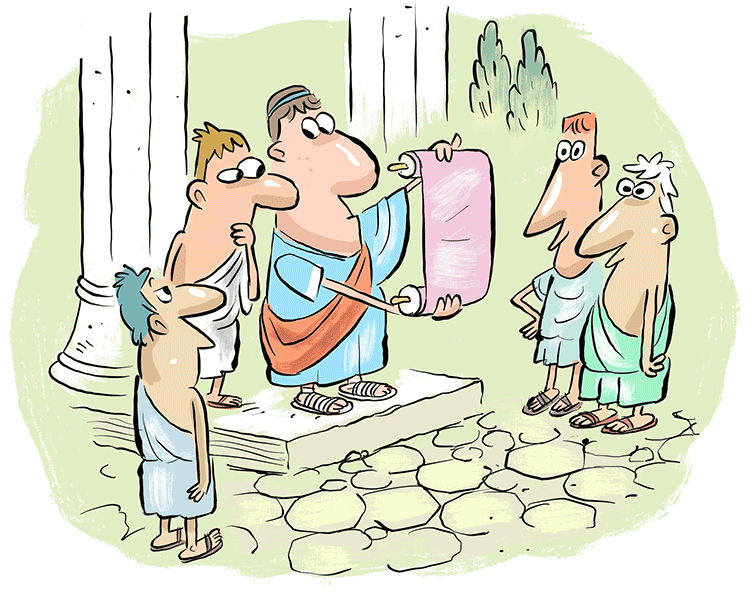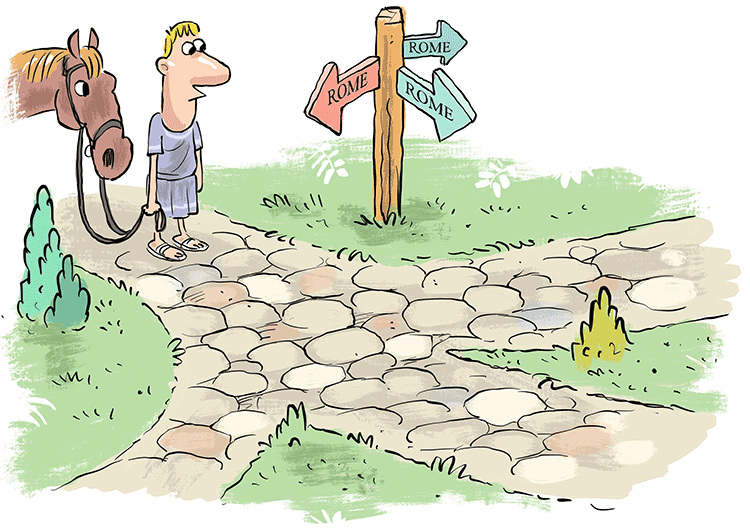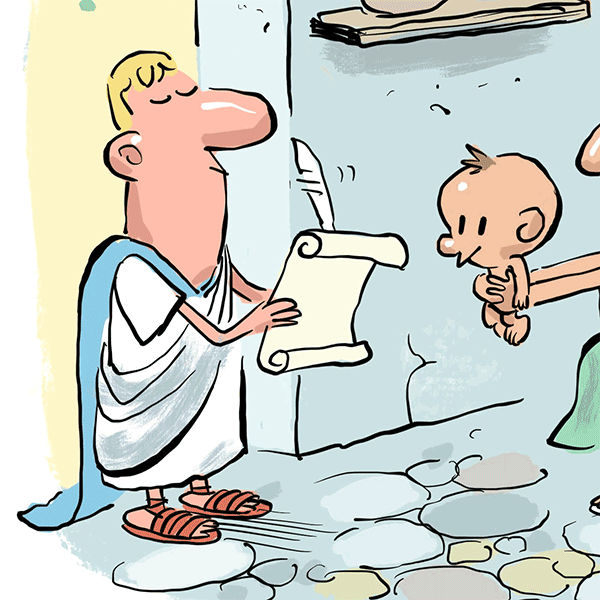According to legend, the city of Rome was founded by two brothers, Romulus and Remus, in 753 BC. A few hundred years later, it was formed into a republic. From there, it expanded its borders until it controlled all of western Europe, North Africa, and much of western Asia, including the modern-nations of Turkey and Syria, turning it into one of the largest empires in history.
However, like all empires old and new, Rome eventually fell. The city itself was sacked in 410 AD and the empire it controlled fell in 476 AD. Its eastern provinces remained united for another 1,000 years, though Rome itself never regained its ancient glory.
With all of this happening so long ago, you might be wondering: who cares? Isn’t it all just ancient history?
Yes, it is. But Rome, much more so than other ancient empires, impacted the world in ways that are still being felt today. Understanding what happened during the 1000+ years that Rome ruled the ancient world helps unearth much of the story of how we got to where we are today.

One Language Into Many
Language is a huge part of human society. It’s how we communicate and it’s how we draw connections to and expand upon the past.
As Rome expanded its borders and conquered vast numbers of people all from different cultural backgrounds, it imposed its language, Latin, onto the local population. Over time, the locals learned Latin, or some version of it, and this helped bring the people of certain regions closer together.
Today, several of the world’s most spoken languages have direct connections to Latin. These languages, known as Romance languages, are Spanish, French, Portuguese, Romanian, and Italian, but the group also includes smaller linguistic groups such as Catalan and Galician.
In addition, the Latin alphabet is one of the most common in the world. It’s used in languages that aren’t considered to be of the Romance tradition, the most popular being English.
So, while Latin is no longer spoken or used as a functional language, it’s at the root of a huge part of human communication. In this sense, the Romans remain among us.

Connecting and Building the Western World
Latin played a big role in connecting the ancient world, but the Romans did more than just talk their way to the top. They also built things. A lot of things.
One of their most important construction projects was the largest network of roads built in the ancient world. There’s a saying “all roads lead to Rome,” and it comes from the fact that the Romans spent vast amounts of money and manpower building roads to connect their empire.
This made trade and government easier by dramatically reducing the amount of time it took to travel from one part of the empire to the other.
In addition to constructing roads, the Romans helped build the ancient world. They built aqueducts, which were basically long pipes that could move water across great distances, and other important infrastructure that helped cities prosper and helped civilization thrive.
The Romans were also huge fans of public spaces. They built forums, which were basically town squares, and other public buildings that encouraged people to get out of their houses and participate in society. If you travel Europe today, you will see many of these spaces still exist, or some version of them, and they feature prominently into people’s lives.
In this sense, while lots has changed over the years, Rome laid the foundation for the modern Western world. Both figuratively and literally.
The Rise of the World’s Largest Religion
Religion has been an essential part of human civilization since the very beginning. What and who people believe in often determines their actions and the course of their society.
However, during Roman times, religion changed quite a bit. In the early days, most people in Rome and its provinces were pagans, meaning they believed in a number of different Roman gods that traced their roots to the Greeks and other ancient cultures.
By the time the city of Rome fell and the empire split into two, a great number of the people living in Roman territories were Christians. They believed in just one god and also his human son, Jesus Christ, who was, according to the religion, sent to Earth to communicate God’s message and also to die for human sins.
Christianity preaches an individual relationship to God and speaks directly to the downtrodden and powerless, of which there were many in the Roman empire.
Mixing Religion and Government
Initially seen as a threat and persecuted by emperor after emperor, the Romans, starting with Constantine I in 313 AD, accepted Christianity and eventually made it the official religion of the empire.
This would go on to have a dramatic impact on the world in which we live today. Christianity remains the world’s largest religion and is followed by nearly one-third of the global population.
Over the centuries, it has undergone considerable changes and broken off into countless sects and denominations. But all of this could not have happened if the ancient Romans had not embraced it and adopted it as their official language.
Whether or not organized religion has been good for society or not is another question. But there is no doubt it has shaped the way we live, and for that we owe quite a bit to the ancient Romans.
A Model for Government
Today, government is a fact of life. It exists in some form or another in every part of the world. And while not perfect and at times problematic, it makes it easier for people to coexist in societies.
Many modern governments can trace their roots directly back to Rome.
First, there is the concept of the republic. A form of democracy, citizens of a republic elect representatives to form a legislature which is then charged with making decisions on behalf of the rest of the population. In many republics, there is also an executive who is responsible for carrying out the decisions of the legislature.
The vast majority of modern democracies operate in this way, and so did that of the Romans. Eventually, Rome grew too big and its republic gave way to a military dictatorship we also call an empire. But when modern nations were being formed, the minds behind them drew on concepts first given to us by the Romans.

Modern Citizenship and Legal Concepts
Rome also gave us other important things related to law and government. For example, the Romans were the first to put the idea of citizenship into action. This was a legal status that guaranteed people certain rights simply for belonging to the empire. Today, citizenship is a critical component of public life. In most countries, simply being born into a country grants you citizenship, which is something the Romans were the first to do.
The Romans also came up with the idea that people have certain rights simply because they are alive. Known in Roman times as ius gentium or “the law of nations,” this was the idea that some laws existed outside of the territorial realms of one nation or another.
The specifics of this has changed over time.
For example, in Roman times, slavery was accepted and quite common. People were not given freedom as part of their inherent rights. But it did apply to commerce and war and made it easier for people from two different areas with different sets of laws to cooperate with one another.
It formed the basis for the concepts of human rights and commercial law, both of which factor heavily into modern life.
Forming the Nations of Today
If there’s one constant in history it’s that things change…constantly. One great example of this is borders.
Take a look at a map of Europe from just 200 or 300 years ago. You would see large countries called Prussia, Austria-Hungary, and the Ottoman Empire, all of which no longer exist today. And although there are a few exceptions, the borders of most European nations have changed in some capacity over the past few centuries. However, if you were to also look at a map of ancient Rome and its provinces, you would see a lot more similarities than you might expect. After all, we’re talking about a civilization that existed 2,000 years ago.
The region of Gallia looks a lot like the modern nation of France, and Hispania, which as a word sounds like Spain, covers much of the Iberian peninsula, which includes the nations of Spain, Portugal, and Andorra. Today’s nation of Italy was once called Italia, and what we know as Germany was called Germania.
The ties formed in these lands thanks to Roman expansion and imperialism helped lay the foundation for modern nations. It encouraged cultures to mix and become more singular and created the conditions for commerce and trade, which helped make people richer and more prosperous.
Of course, people have been fighting over these borders and who belongs to who pretty much ever since. But the groundwork is and always has been Roman.
An Eternal Society
The Romans were far from perfect. They were huge slave owners, neglected women, brought war and violence to anyone who opposed them, or to anyone sitting on land they wanted, and carried out religious persecution on a massive scale. But they also built our modern world.
Their laws, roads, religious beliefs, governments, words, letters, and so much more are just as alive today as they ever were. Almost no part of modern western life is completely free from Roman influence.
For this reason, Rome, despite falling more than 1,500 years ago, remains powerful. There’s no telling how future generations will look on the Romans, but for now, it seems as though they built a society that is truly eternal.
Written by Matthew Jones
Illustrated by Jean Galvao
